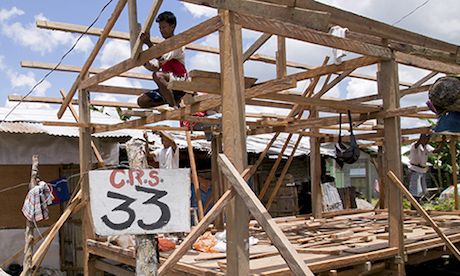Over a 3 year period, the social action arm of the Catholic Church has helped about 1.8 million people affected by the destruction caused by the super typhoon Haiyan that struck the central Philippines in 2013.
The church’s recovery and rehabilitation programme has become one of its largest and far-reaching natural disaster responses, amounting to about US$50 million.
All the targets for the three-year programme in nine dioceses covering 51 towns and 166 villages in the central Philippines have been reached.
The church’s response has brought comparisons with the government-sponsored rehabilitation programmes.
These programmes have been beset with corruption and charges of substandard housing construction.
Of 205,128 housing units that were promised by the government, only 67,754 units, or 33 percent, have been completed.
And only 34.3 percent of those were occupied, a check of records revealed.
Meanwhile, Caritas Philippines reported that it repaired 593 housing units and constructed 768 transitional units, 1,923 progressive core-shelter units, and 1,167 permanent shelter units while providing a host of other services to storm-survivors.
The progressive core shelters have a lifespan of 10 years while “permanent” houses can last a minimum of 20 years, according to Caritas.
While the number of government-built housing units may be significantly more, residents have described them as poorly built and inadequate for family needs.
Jing Rey Henderson, the church group’s coordinator, said church officials constantly tell people that the programme belongs to them and is “not one of the Catholic Church’s”.
She said people need to have a sense of ownership and entitlement and to bounce back and become more “empowered, resilient, and sustainable”.
Henderson said Caritas works within the framework of community-managed disaster risk reduction and the principles and strategies of community organising.
Source
